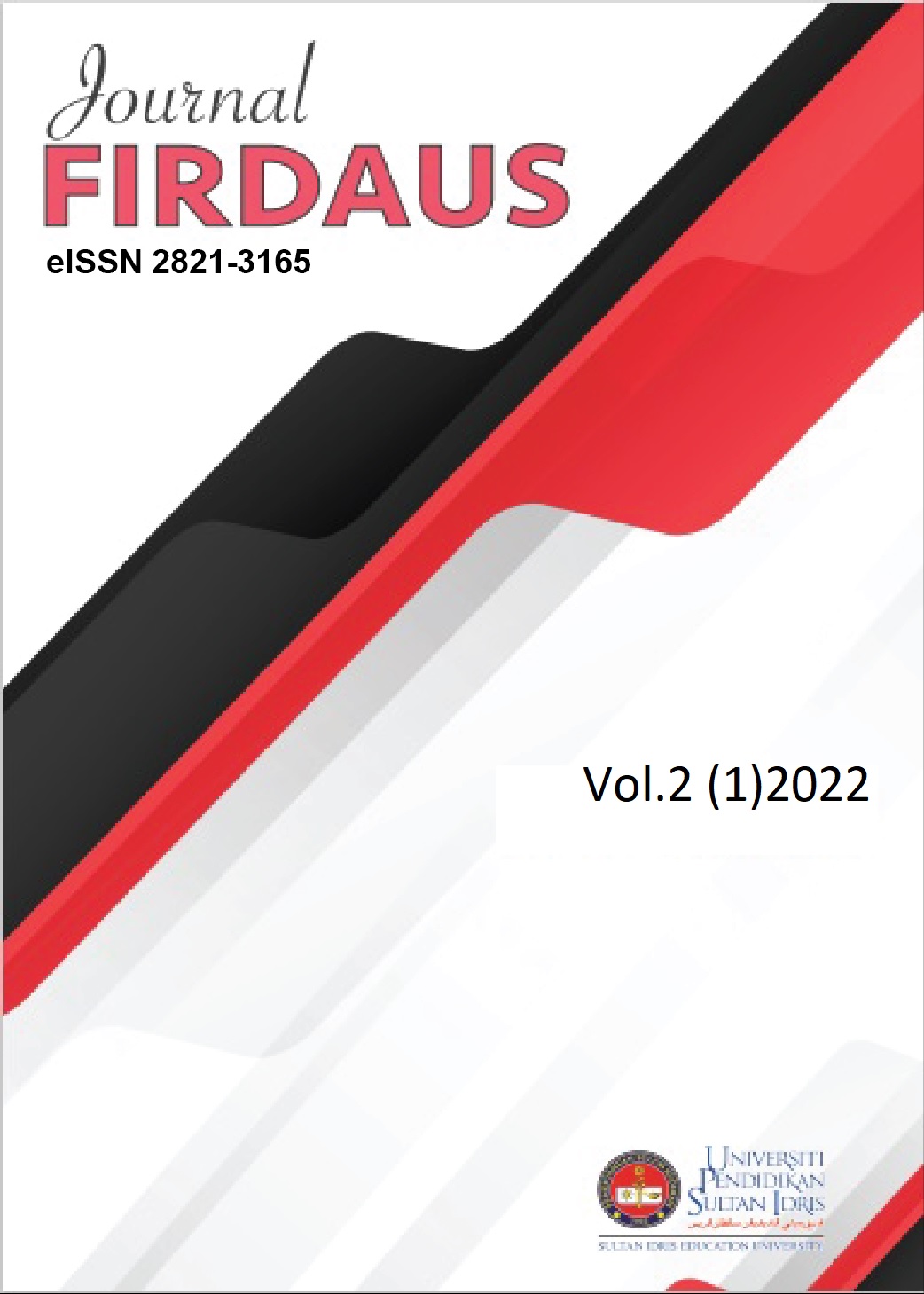The Lanao Sultanate Political Structure in the 17th Century: Its Traditional Leaders Appointment, Qualifications and Functions
DOI:
https://doi.org/10.37134/firdaus.vol2.1.3.2022Keywords:
Lanao Sultanate, sultan, Maranao, appointment, qualifications, functionsAbstract
The Lanao datus (chieftains) founded the Pat a Pangampong sa Ranao (The Four-States of Lanao) in 1616. The Four-States of Lanao had evolved into a sultanate which now the Lanao Sultanate. The traditional leaders of Lanao Sultanate consist of several sulutan (sultans), bai-a-labi (sultanas), radia-muda or datu-a-kabugatan (ministers), m’babaya ko taritib/pagawid (governors), radia-laut (army and naval commander), kalis (judges), imāms (prayer leaders), and pananalsilas (genealogists). Studies dealing with the whole spectrum of the political structure of Lanao Sultanate in the 17th century until today is not represented in Philippines literature, in fact there is no published work dealing with the appointment, qualifications and functions of the said traditional leaders of the said sultanate. To fill in this research gap, this paper explores in-depth the appointment, qualifications and functions of the traditional leaders of Lanao Sultanate.
Downloads
References
Alonto, H. M. (1960). “Islam in the Philippines.” Fokien Times Yearbook
Brecht-Drouart, B. (2011). “Between Re-traditionalization and Islamic Resurgence. The Influences of the National Question and the Revival of Tradition on Gender Issues Among Maranaos in Southern Philippines.” Ph.D. Dissertation, Goethe Universität, Frankfurt Am Main.
Buat, M. M. (1977). “Survey of Muslim Filipino Muslim Adat (Customary Law) and Role of Agama Court.” Marawi City, Philippines: In Mindanao Journal, Mindanao State University.
_____ Dansalan Quarterly. 1987. Vol. VIII, no. 4. Marawi City: Gowing Memorial
Research Center, Dansalan College Foundation Incorporated.
Hadji Abdul Racman, S. M., & Lulu, R. A. (2021). Identifying and Categorizing Maranao Words with Arabic Roots: A Case Study of the Maranao Language Spoken in the Philippines. Journal of Communication and Cultural Trends, 3(2). https://doi.org/10.32350/jcct.32.01.
Hadji Abdul Racman, S. M., & Lulu, R. A. (2021). Identifying and Categorizing Maranao Words with Arabic Roots: A Case Study of the Maranao Language Spoken in the Philippines. Journal of Communication and Cultural Trends, 3(2). https://doi.org/10.32350/jcct.32.01.
Hadji Abdul Racman, Sohayle M. 2020. “The Political Legitimacy of Lanao Sultanate in the 17th Century with Special Reference to the Political Theory of al-Māwardī.” Ph.D. thesis, Sultan Omar ‘Ali Saifuddien Centre for Islamic Studies, Universiti of Brunei Darussalam. Brunei Darussalam.
Hadji Abdul Racman, S. M., Shah, H. S., & Ayaz M. (2021). “The Lanao Sultanate Today: Its Adat Laws and Islamic Law on Fornication with Special Reference to the Islamic Perspectives of Al-Māwardī”. Journal of Islamic Thought and Civilization 11 (1), 318-34. https://doi.org/10.32350/jitc.111.17.
Hadji Abdul Racman, Sohayle M. The Islamicity of Lanao Sultanate in the Philippines in the 17th Century as a State. 2018. International Journal of Sciences: Basic and Applied Research (IJSBAR). Vol. 42, no.3, pp.205-233.
Hayase, S. (2007). Mindanao Ethnohistory Beyond Nations, Maguindanao, Sangir, and Bagobo Societies in East Maritime Southeast Asia, ed. by Antonio de Castro. Manila, Philippines: Ateneo De Manila: University Press.
Labay, C. D. (1980). The Maranao Man by Maranao Men. Mindanao Art and Culture, No. 4, Marawi City, Philippines: University Research Center, Mindanao State University.
Laarhoven, R. (1989). The Maguindanao Sultanate in the 17th Century: Triumph of Moro Diplomacy. Quezon City: New Day Publishers.
Macabando, S. M. (2005). Brief History of the Balindong Dynasty of the Dominion State (Sultanate) of Pungampongan-a-Masiu. Marawi City, Philippines: Marawi Sultanate League.
Macabando, S. M. (2008). Brief History of the Maranao Mindanao, Maranao Salsila (Genealogy) Their Origin, Vol. 1. Marawi City, Philippines: Marawi Sultanate League.
Madale, N. T. (2002). Maranao. Manila, Philippines: National Commission for Culture and the Arts.
Majul, C. A. (1978). Muslims in the Philippines. 3rd ed. Manila, Philippines: Saint Mary’s Publishing.
Mednick, M. (1965). Encampment of the Lake: The Social Organization of Muslim Philippines (Moro) People. Research Series No.5. Chicago, USA: Philippine Studies Program, University of Chicago.
Peter G. G. & Robert M. ed. (1974) The Muslim Filipinos. Manila: Philippines: Solidaridad Publishing House.
Saber, M. & Tamano, Mauyag M. T. (1986). “Decision-Making and Social Change in Rural Moroland.” Marawi City, the Philippines: University Research Center, Mindanao State University, Mindanao Journal, xii.1-4.





